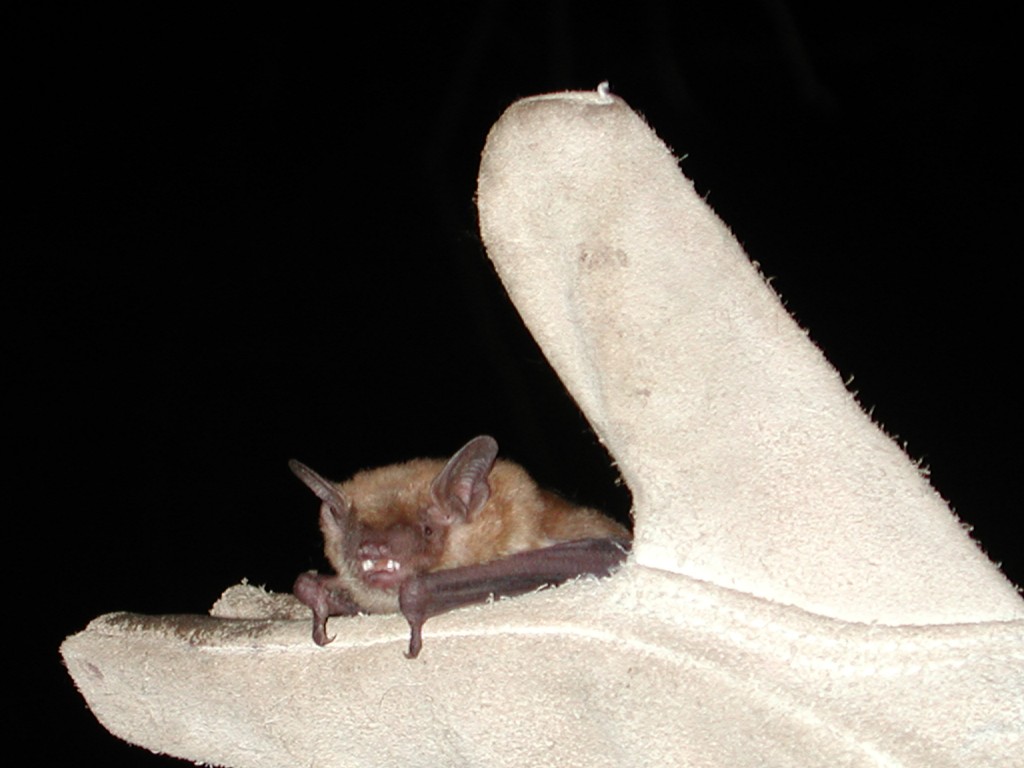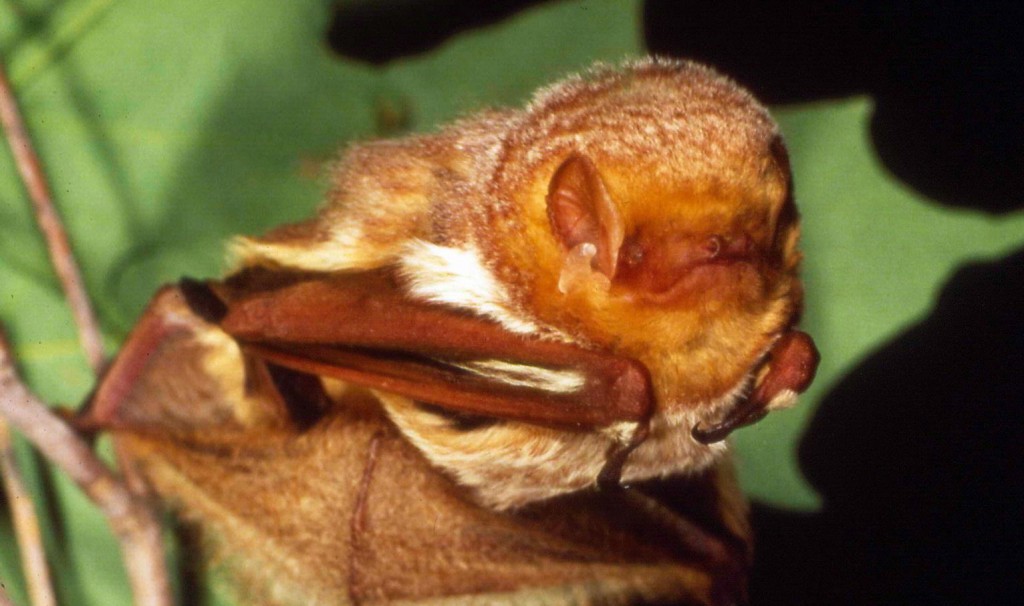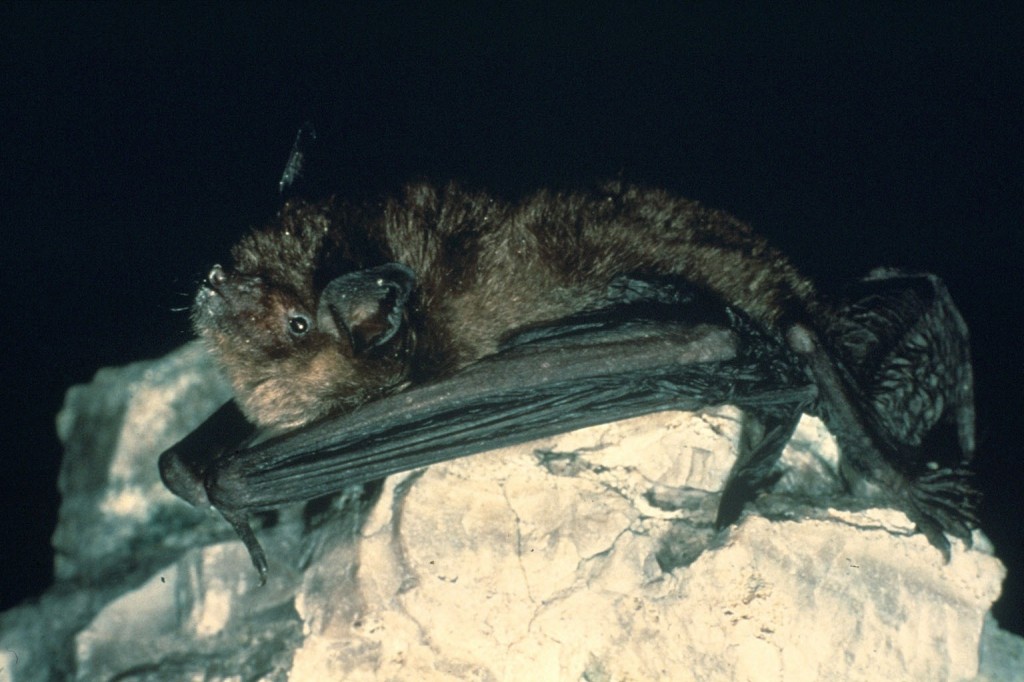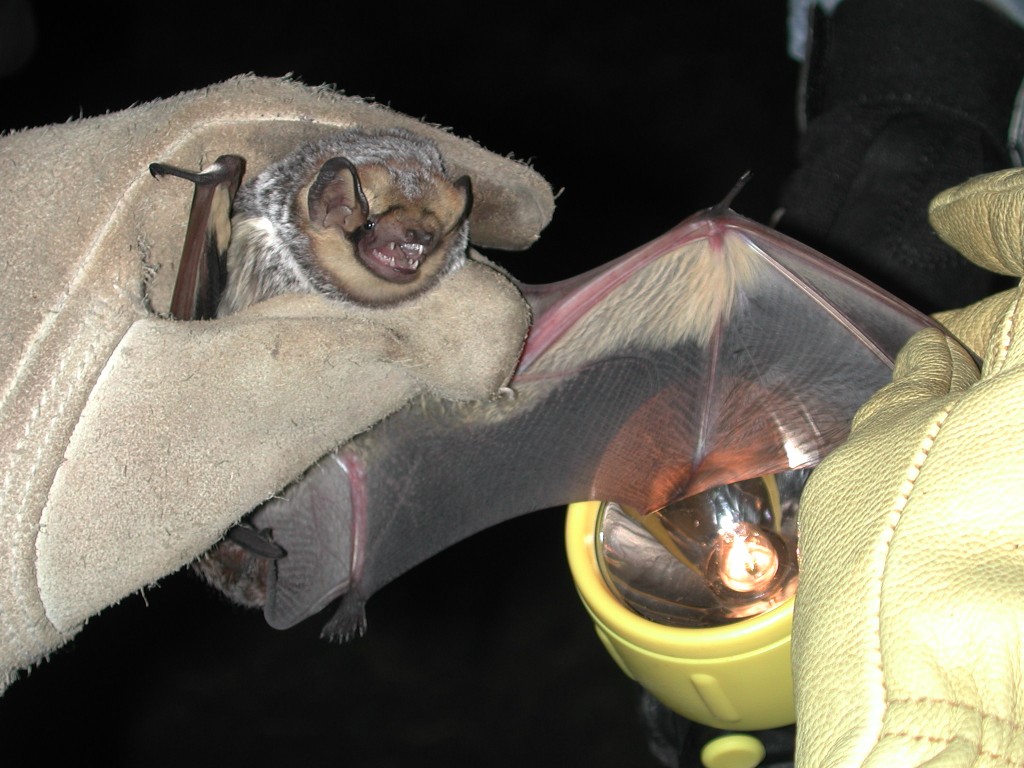Bats: Nighttime Bug Busters
Bats are among the most overlooked and misunderstood yet common mammals of Monroe County. They are easily overlooked because they are creatures of the night. They are misunderstood because of conflicted European mythological hogwash, treating them as “Batman- heroic” on the one hand, and “Dracula-like-loathsome” on the other.
Not all the world sees bats in the same light. Among the Chinese and Arabs bats symbolize good luck; and the ancient Mayans of Central America treated bats with religious devotion.
But, on any given summer night in Monroe County, approximately 200,000 bats are policing the county by feasting on insects before the bugs feast on us. Bats eat half their body weight in bugs each night. One little bat can consume 700 mosquitoes an hour. All told, bats eat 62 tons of bugs a year in Monroe County.
Bats are the only mammals capable of powered flight. Their wings are leathery, elastic layers of skin stretched over their forearms and hands and attached to the sides of their bodies and to their legs. Bats use their wings to catch insects in flight, scooping up their prey with the wing membranes between their hind legs, like a catcher’s mitt, and then, while still in flight, reaching down with their mouths to eat their prize.
Most bat species have very large ears. It’s a physical adaptation because of their amazing abilities to navigate using “echolocation.” They always fly with their mouths open because they constantly emit chirping sounds, varying from 5 to 500 per second, to transmit radar-like, high frequency pulses. They then hear the returning echoes to determine the location of objects and prey. They can hear an insect literally walking across a leaf.
The very features that seem oddest to humans– their strange wings and modified faces– are all adaptations for hunting by sound on the wing in the dark. Moreover, bats are not blind–debunking the “blind as a bat” myth– and most species have acute eyesight, which they use to see distant objects.
There are about 1100 species of bats worldwide, constituting 20% of all mammals on earth. About 70% of bat species are insectivores; most of the rest are fruit eaters; and, yes, there are three South American vampire bat species whose principal food source is blood. Worldwide, bats range in size from the Kitti’s Hog-nosed Bat of Southeast Asia, which is 1 inch long and weighs .07 oz, to the Philippines’ Great Golden-crowned Bat, which has a 5-foot wingspan and weighs 3 lbs. There are 45 bat species in the United States.
In North America, bats breed in late fall just before they go into winter hibernation. Female bats store the semen and don’t ovulate and give birth until the following spring. Most litters consist of one, and rarely two, offspring. Baby bats are born naked and temporarily blind and usually weigh about ⅓ their mother’s weight. Like all mammals, female bats breast-feed their young until they are capable of flight. It is quite common for females to carry their infants with them during their nocturnal feeding forays.
Monroe County hosts 10 species of bats. They range in size from the smallest, the Eastern Pipistrelle, which is 3 inches long, has a 10″ wingspan and weighs .3 oz, to the largest, the Hoary Bat, at 6 inches long, with a 16″ wingspan, and weighing in at 1.2 oz.
Since Monroe County boasts more caves than any other county in Illinois, it’s no surprise that many cave-related bat species are found here. The Gray Bat, a summertime only resident of the county, roosts by day only in caves and quarries. The Little Brown Bat, Northern Bat, Indiana Bat, Eastern Pipistrelle, and Big Brown Bat, all yearlong residents of the county, may roost in trees during summer, but all hibernate in local caves and quarries during winter months.
The Eastern Red Bat, Hoary Bat and Evening Bat are summertime only residents of the county and roost only in trees, never caves. Similarly, the tree-roosting Silver Haired Bat only moves through the county during its twice-annual migrations.
Because of bats’ high mobility, broad distribution, and communal roosting behavior, they can be a natural reservoir for many pathogens, including rabies, severe acute respiratory syndrome (SARS), and several viruses. It is prudent not to pick up and play with bats.
Communal roosting also makes bats highly susceptible to transferring disease amongst themselves. Since 2006, a previously unknown pathogen called white nose syndrome has killed one million bats in caves in New York and surrounding Northeast states. U.S. Fish & Wildlife scientists still have not determined a cause or cure.
Bats provide an immeasurable service with insect reduction. Far more valuable than Batman and far less threatening than Dracula, bats are another working part of our natural world that improves our lives simply by their continued existence.
To learn more about bats – to “Meet these Neighbors” — Clifftop and the Monroe County University of Illinois Extension Service hosted a seminar in April. Dr. Joyce Hoffman, Emeritus Scientist with the Illinois Natural History Survey at the University of Illinois, will make a presentation on the natural history of bats in Monroe County, on Tuesday, April 20th, 2010 at the Monroe County Extension Service at 7:00 PM. The presentation was free and open to the public.
Clifftop, a local nonprofit organization, is focused on preserving and protecting area bluff lands.
A version of this article appeared in the April 2nd 2010 edition of the Monroe County Independent.
© 2007 all content rights reserved, Clifftop NFP.
Comments are currently closed.




